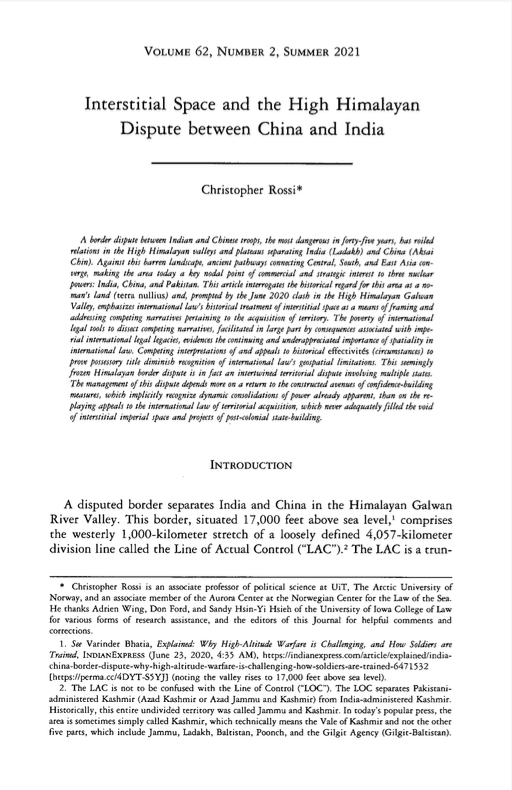Resource information
A border dispute between Indian and Chinese troops, the most dangerous in 45 years, has roiled relations in the High Himalayan valleys and plateaus separating India (Ladakh) and China (Aksia Chin). Against this barren landscape, ancient pathways connecting Central, South, and East Asia converge, making the area today a key nodal point of commercial and strategic interest to three nuclear powers, India, China, and Pakistan. This article interrogates the historical regard for this area as a no man’s land (terra nullius) and, prompted by the June 2020 clash in the High Himalayan Galwan Valley, emphasizes international law’s historical treatment of interstitial space as a means of framing and addressing competing narratives pertaining to the acquisition of territory. The poverty of international legal tools to dissect competing narratives, facilitated in large part by consequences associated with imperial international legal legacy, evidences the continuing and underappreciated importance of spatiality in international law. Competing interpretations of and appeals to historical effectivités to prove possessory title diminish recognition of international law’s geo-spatial limitations. This seemingly frozen Himalayan border dispute is in fact an intertwined territorial dispute. The management of this dispute depends more on a return to the constructed avenues of confidence building measures, which implicitly recognize dynamic consolidations of power already apparent, than on the replaying appeals to the international law of territorial acquisition, which never adequately filled the void of interstitial imperial space and projects of post-colonial state-building.


